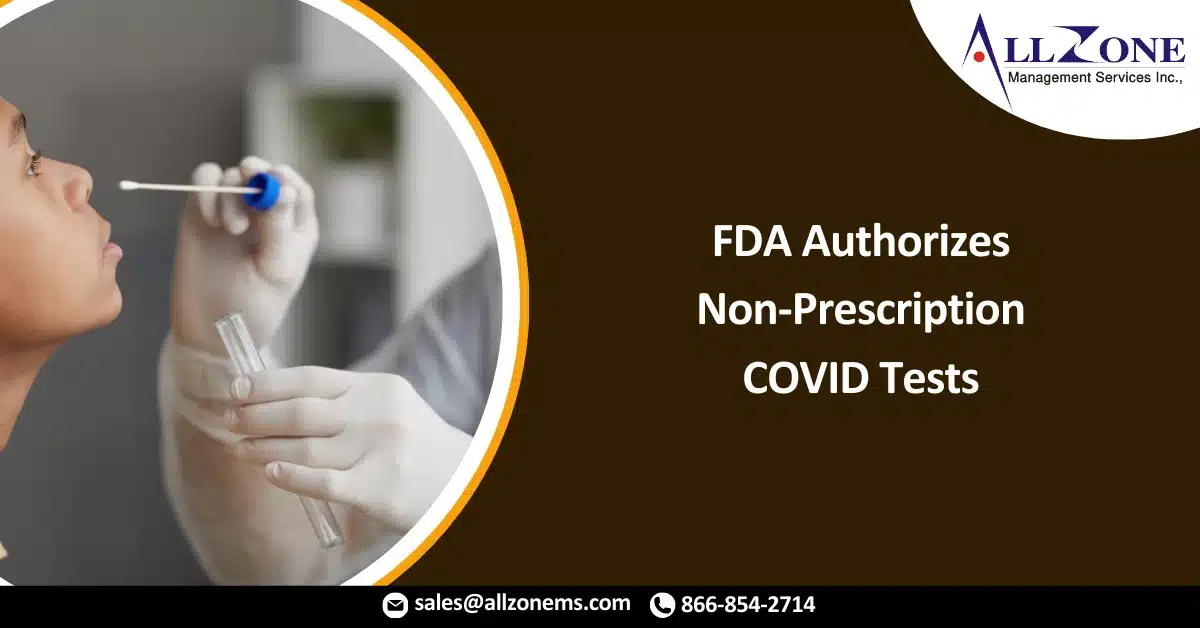The FDA grants emergency use authorization for at-home, over-the-counter COVID-19 tests.
On March 5, 2021, Cue Health received emergency use authorization (EUA) from the U.S. Food and Drug Administration (FDA) for their Cue COVID-19 Test for Home and Over The Counter (OTC) Use. The nucleic acid amplification test (NAAT) detects the RNA of SARS-CoV-2, the virus that causes COVID-19, with the accuracy of a central lab test. The cartridge-based nasal swab test is appropriate for all adults and children as young as two years, regardless of whether symptoms are present or not. No prescription is required. The EUA for this test aims to increase “the availability of accurate and reliable tests for all Americans,” said Acting FDA Commissioner Janet Woodcock.
The First of Its Kind
“This is the first molecular diagnostic test available without a prescription. For the first time, consumers can access laboratory-grade testing at home. This is an important milestone in the advancement of COVID-19 testing,” said Ayub Khattak, Co-Founder and CEO of Cue. The company expects to be able to produce more than 100,000 tests per day by summer 2021. The accuracy of the test should make this method of easy testing desirable to those who want to avoid or don’t have transportation to testing centers. The OTC tests have been shown to correctly identify 96 percent of positive samples from symptomatic individuals and 100 percent of positive samples from individuals without symptoms.
How Does it Work?
The user takes a nasal swab from the lower part of their nose with the sample wand and then inserts the wand into the cartridge, which is placed inside the reader (required but not included with the cartridge pack) to run the test. Results are communicated directly to the Cue Health App in about 20 minutes. The mobile app requires individuals to create an account. In the future, the app will be updated to include capability to report test results as appropriate to public health authorities to monitor disease prevalence. The Cue website lists all compatible mobile smart devices so users can verify that their device is compatible before ordering. Normal limitations and disclaimers apply to the at-home testing (e.g., improperly collecting or handling the sample) that may affect the outcome of the test.
Other Recent Approvals
On March 31, 2021, the FDA also authorized the Quidel QuickVue and Abbot BinaxNOW antigen at-home self-tests, which can be purchased without a prescription. Both are nasal swab tests for asymptomatic individuals that allow at-home results within minutes. The user must test two different nasal swabs within 36 hours for full results.
“The FDA continues to prioritize the availability of more at-home testing options in response to the pandemic,” said Jeff Shuren, M.D., J.D., director of the FDA’s Center for Devices and Radiological Health. “With the FDA’s authorization of multiple tests, the public can be assured these tests have met our scientific standards for emergency use authorization. As we’ve said all along, if it’s a good test, we’ll authorize it.” Currently, the FDA has authorized more than 330 tests and collection kits for a variety of uses, users, and locations and continues to prioritize review and authorization of EUA requests during the pandemic.
The Results Are In
With any new test or procedure, questions always arise. Patients and doctors alike will want to know:
- What should a user do if they test positive at home?
- What should a user do if they test negative at home?
- Are self-test results acceptable when a negative test is required to return to work or school?
- Are doctors required to follow up a positive at-home test with one in the office for confirmation or can they assign a COVID-19 diagnosis based on the self-test?
- Will insurance companies cover the cost of an at-home test if it doesn’t require a prescription?
- If patients test positive, how should it be reported to the state?
We may not have all the answers yet, but there is guidance from The Centers for Disease Control and Prevention (CDC). When utilizing an OTC, at-home test, the CDC recommends you:
- Communicate your results to your healthcare provider, who is responsible for reporting your test results to the state health department. If the at-home test has an app that allows you to report your results to the state health department, inform your healthcare provider whether you used that app for results reporting.
- False negatives are possible, as is testing negative if the sample was collected too early in your infection. In this case, you could test positive later during your illness. Discuss your symptoms and test results with your healthcare provider to determine if you need follow-up testing.
- If you test positive, tell your healthcare provider and stay in contact with them during your illness. To avoid spreading the virus to others, follow CDC recommendations.
For More Information: https://www.aapc.com/blog/68798-fda-authorizes-non-prescription-covid-tests/

